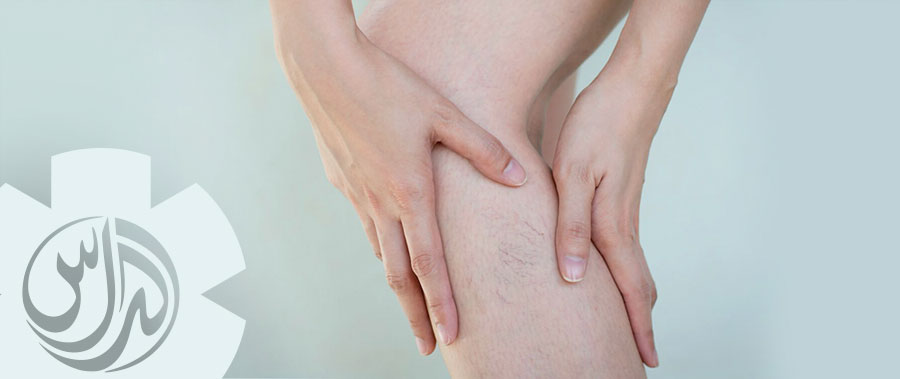
Veins and capillaries in legs and feet are exposed to significant pressure because their job is to bring back the blood from the peripheral parts of the body to the heart. In order to do that, veins have to defy gravity and push the blood up the legs towards the heart. This is an especially strenuous task when you are standing or sitting for a long period of time. Some of the most common diseases that affect veins and capillaries are varicose veins, spider veins and dilated capillaries.
Varicose veins are enlarged, swollen and twisted veins that generally develop in the legs, and they are visible. This disease mainly affects women, but men can also suffer from it. Varicose veins can be blue or green in color, but in many cases they are colorless. In some people they seem to be visible only when a person is standing, while lying with the legs in an elevated position makes them not easily visible.
Spider veins are similar to varicose veins, only they are their milder version. The main difference is in diameter, as varicose veins are larger than 2mm in diameter while spider veins don’t exceed 2mm. Another difference is that spider veins are usually dark red in color and that they can also appear on the face, especially near the mucous membranes. Varicose veins are not just problematic in terms of aesthetics, but they can also cause health issues such as heavy legs, muscle cramps, burning sensation or ulcers near the ankles. Should you notice those skin ulcers, make sure to see your physician because they are a signal of a more serious health problem.
Main causes of varicose veins and spider veins are:
- This disease usually runs in the family
- Blood vessels lose elasticity with age and vein problems worsen
- Varicose veins and spider veins may develop during pregnancy in some women
There are some risk factors that can contribute to varicose and spider veins, such as obesity, sex or jobs that require standing or sitting for long periods of time. Dilated capillaries appear mainly on face and they are usually pink, while being less than 0.2mm in diameter. They sometimes appear in clusters, and then they resemble a bruise.
Varicose Veins, Spider Veins and Dilated Capillaries Treatment
The first thing to be done when it comes to those vascular problems is removing risk factors. This usually means losing weight, avoiding standing and sitting for long periods of time, rest your legs and elevating them.
There are several common treatment methods:
-
- Compression stockings. Wearing compression stockings is the first resort in treating varicose and spider veins. Their role is to tighten the muscles evenly and help blood circulation. The level of compression varies. They should be worn all day.
- Sclerotheraphy. This is a procedure in which a chemical solution is injected directly into varicose veins. It makes scars in them on the inside and making them collapse, thus redirecting circulation thorough other, healthy veins. If this is conducted properly, varicose veins should disappear. This method is convenient as it can be performed without anesthetic. This procedure is very effective for removing spider veins.
- Laser surgery. In this procedure, light is used to destroy diseased and abnormal portions of the veins. The vein whose part has been destroyed closes off.
- Intense pulse light therapy (IPL). Mainly used for dilated capillaries and spider veins, this procedure uses a concentrated pulse of light which causes abnormal blood vessels to shrink and disappear.
- Vein stripping. This is removing a long vein through small cuts that a surgeon makes. This procedure requires either general or spinal anesthetic.
- Endoscopic vein surgery. This kind of treatment is used only in severe cases of varicose veins, when ulcers have already appeared.
Our clinic can provide you with the best treatment thanks to our expert Dubai dermatologist and state-of-the-art equipment.
Book a visit 04 452 998 or by filling the online form